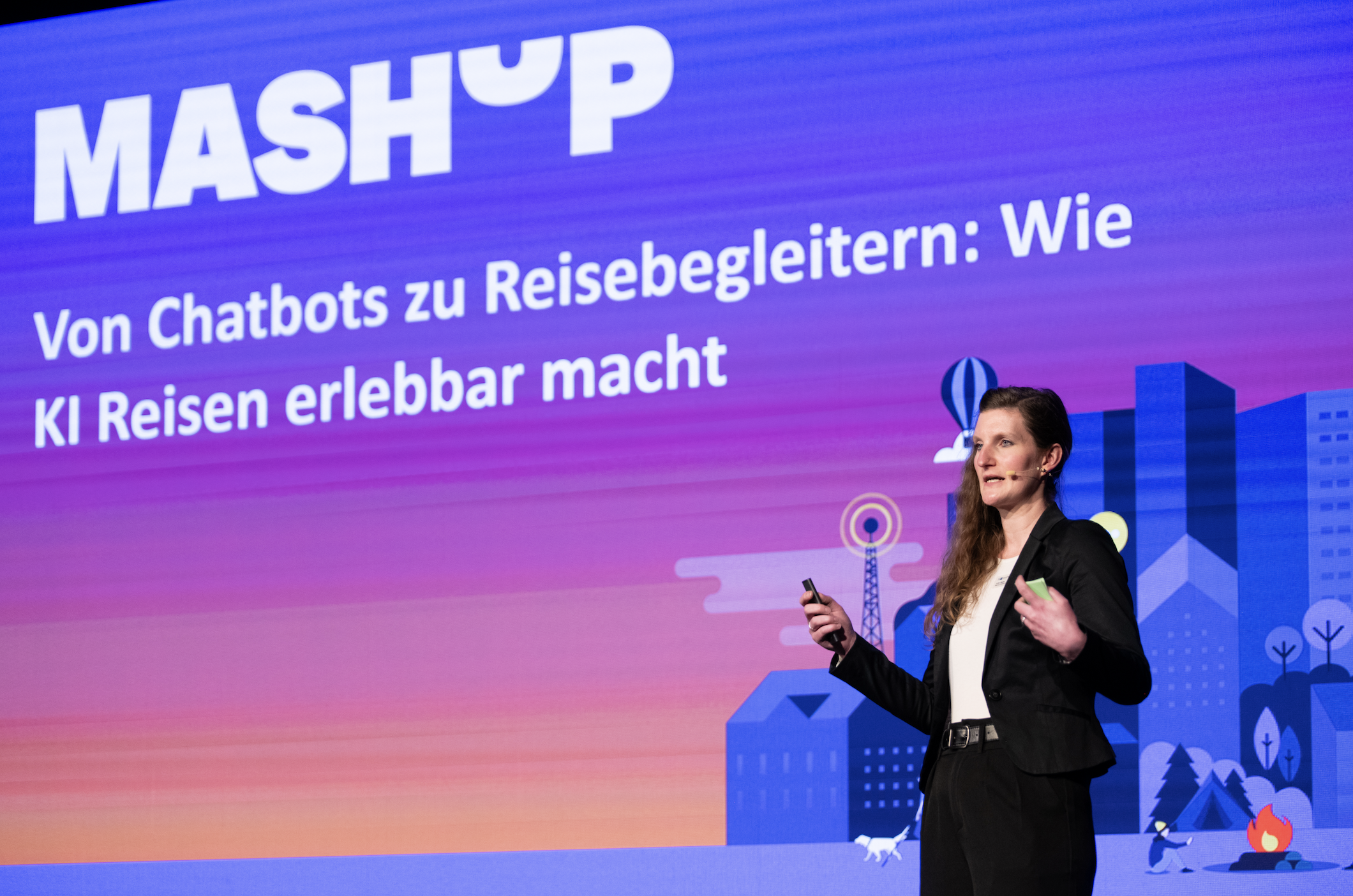Storytelling for software: from code to story
It all began in 1843, when the British mathematician Ada Lovelace wrote an algorithm for a mechanical calculator – and thus became the first female programmer in human history. Less than 200 years later, in the digital age, almost no industry can do without software. Providers are a dime a dozen in every sector. The competition is therefore enormous and many solutions seem interchangeable at first glance. Functionalities and technical details alone are often not enough to convince potential customers. This is where storytelling for software comes into play – emotional stories as the ultimate tool for standing out from the competition.

The connection between storytelling and software
Numbers over numbers – software may seem abstract and technical at first glance, but behind every solution there are concrete use cases and human needs. Storytelling offers the opportunity to tell these stories and make complex products more tangible. It’s not just about listing features, but about creating emotional connections: How do algorithms help in everyday life? How do they solve my problems? How does software improve the way I work? Stories create context, they arouse interest and help to make technical products more understandable and attractive.
People process information better when it is embedded in stories. A software solution may have numerous functions, but a captivating narrative that shows how a specific challenge was solved remains in the memory. This is why storytelling should absolutely be used in the software industry to market and position products.
The elements of storytelling for software
Good stories always follow a clear structure, which is particularly useful in the software industry. It can be divided into several elements that have a decisive influence on the success of storytelling.
Protagonist: Stories without a main character don’t work. In the world of software, this is often a customer or a company with a specific challenge. The target group can identify with this character because they have similar problems and are looking for solutions.
Example: A tradesman can hardly keep up with all the files and often has to work overtime to keep on top of the chaotic paperwork.
The problem: In the software industry, inefficient processes, a lack of automation or a security risk could be obstacles. This issue is clearly defined so that the target group understands what is at stake.
Example: The employees in a craft business fill out their time sheets, but as is so often the case, one or two pieces of paper get lost on the construction site. At the end of the month, the office staff can’t see where the tradespeople were working that day. Tedious detective work is required.
The solution: This is where the software comes into play. It is presented as the solution to the problem. But instead of just mentioning the technical features, the story shows how it supports the protagonist in overcoming the problem. The aim is to present the added value in a tangible and comprehensible way.
Example: The owner of the craft business decides to digitalise the administrative tasks. Processes such as recording working hours, which were previously done with pen and paper, can now be carried out using software and the corresponding app. All information is sent to the office in real time.
The result: The end of a good story shows the success that the main character has achieved thanks to the software solution. The positive influence of the software is emphasised here, be it through greater efficiency, improved communication or increased security.
Example: The company finally runs more efficiently because everyone is always up to date and no one has to chase after missing notes. The entire team is more relaxed because there is enough time to concentrate on more important tasks.

Useful tips for successful storytelling in the software industry
How do you put this theory into practice? Here are some tips to help you use storytelling for software effectively:
- Know your target audience precisely: Before a story is told, it must be clear for whom it is intended: What problems and needs does the target group have? What kind of stories appeal to them?
- Choose the right platform: Storytelling doesn’t always have to take the form of written text. Videos, podcasts or interactive experiences can be just as effective.
- Keep the story simple: Even if the software is complex, the story should be easy to understand and avoid technical jargon, because a clear, simple message is better remembered.
- Combine facts with emotions: Facts support credibility, but the focus is on emotions. Stories are more powerful when they incorporate personal experiences or examples that appeal to the target group.
- Be authentic: Credibility is the be-all and end-all, which is why companies are always better off sticking to the truth and leaving out exaggerations. Because authenticity creates trust and long-term customer relationships.
Slack shows how storytelling works for software
Slack’s ‘Where Work Happens’ campaign is an excellent example of successful storytelling in the software industry. Instead of focussing on technical features, it puts real users and their experiences with the software at the forefront. Slack shows how teams have been able to work more productively and overcome creative challenges by using the platform. Through stories from everyday working life in various industries, Slack not only conveys the benefits of its software, but also the emotional significance of teamwork and efficient communication.
Bottom line: Storytelling for software as a success factor
Storytelling for software is more than just a marketing trend. It is an effective method of making the complexity of technical products understandable and creating emotional connections. Companies that utilise this tool are better perceived in a competitive market and can build long-term relationships with their target group. At a time when technological developments are advancing faster than ever before, storytelling offers a way to communicate the benefits of software solutions in a compelling and convincing way.
If you want to delve deeper into the history of one of the largest software companies ever, follow this link to find SAP’s hero’s journey.
Share this article









